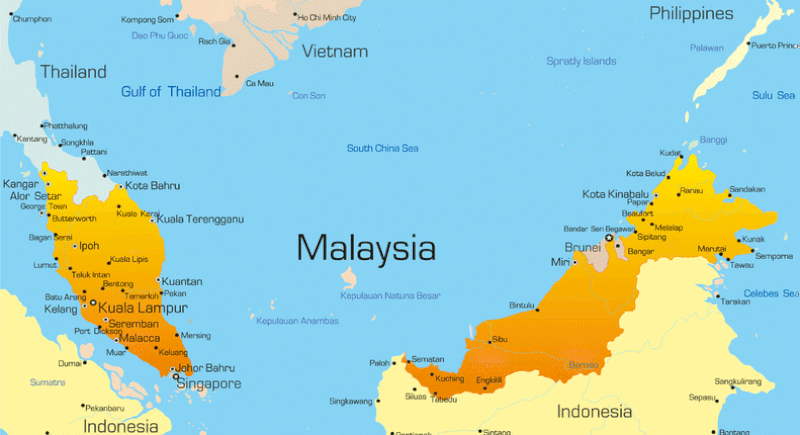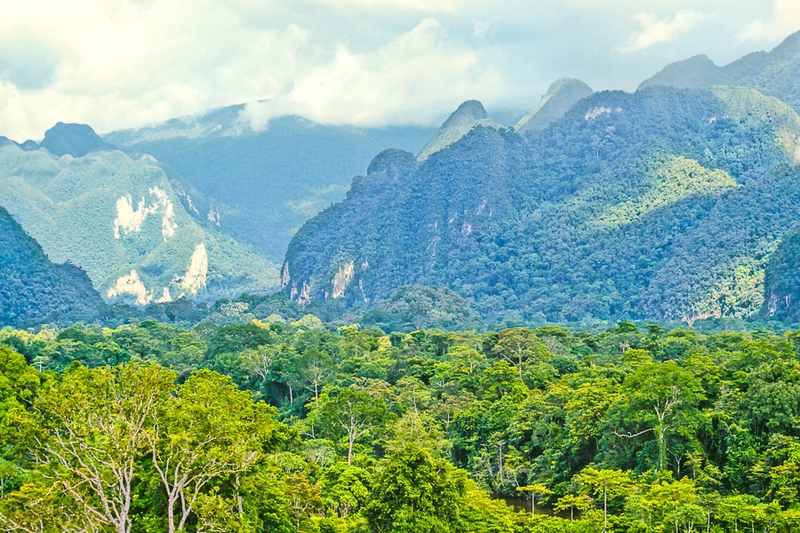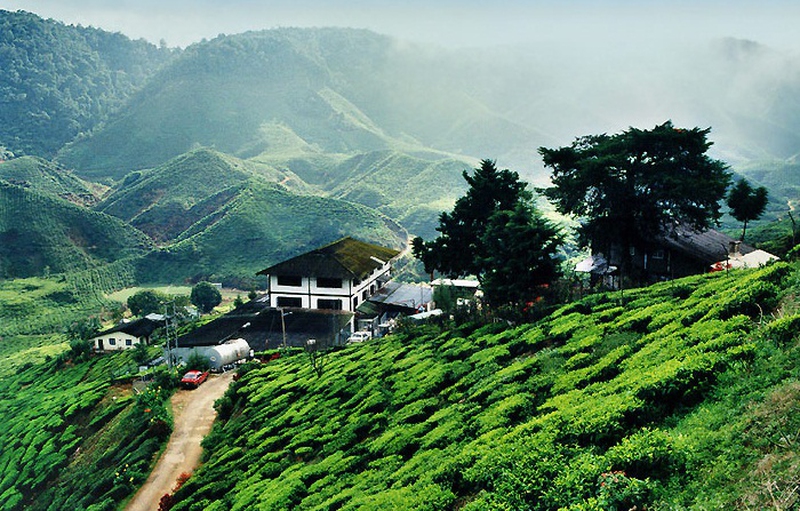Malaysia is a country known for its diversity, a melting pot of cultures and a blend of cuisines, customs and religions. Even its geography is diverse, with large islands, fertile highlands, mountains and rainforests. Malaysia is uniquely divided into two widely separated landmasses, West Malaysia and East Malaysia. West Malaysia shares the southern portion of a peninsula with Thailand, while East Malaysia forms part of Borneo Island across South China Sea. Where to go in Malaysia would never be a problem with all that it has to offer.

Where to Go in Malaysia
Kuala Lumpur
Kuala Lumpur is the capital of Malaysia, and it represents a perfect blend of the country's past and present, where history meets modern life and where the present is marked by a touch of the future.
From the past, you will see British colonial buildings alongside the modern high-rise towers and cosmopolitan structures. The biggest attraction in the city is the Petronas Towers, which are among the world’s tallest buildings, symbolizing Malaysia's growth over the decades. Hidden in the city is a small paradise called The Lake Gardens, which gives you a glimpse of the country's abundant plant and wildlife.
Penang
Penang is the place to go if you want to experience how the old Malaysia was – a blend of Chinese, Indian, Malaysian and British cultures. Trading took place in a city called Georgetown, where interesting architecture distinguishes it from any Southeast Asian townscape. Penang also boasts of its wonderful beaches and nearby food stalls serving exotic Malaysian cuisine and culinary blends.
Langkawi
South of Thailand is the Langkawi archipelago, which has 99 scattered islands on the Andaman Sea. These isles are known for their pristine white sand beaches, where fun water activities, including boat riding, snorkeling and diving are popular. Swim with the water creatures at the Palau Payar Marine Park or simply relax in a viewing deck before moving on to another adventure.
Gunung Mulu National Park
When it comes to where to go in Malaysia, Gunung Mulu National Park could be one of your choices. It is famous for extraordinary limestone formations and awesome cave systems, which are some of the most phenomenal natural attractions in Southeast Asia. This national park is located in the Borneo Island in the Sarawak State, and it features some of the longest and largest cave systems worldwide, including the Sarawak Chamber. It is the world’s largest cave and is estimated to be large enough to contain forty Boeing 747 aircrafts.
Kota Kinabalu
Kota Kinabalu, or KK, is the capital of the Sabah State in Malaysian Borneo. Its close proximity to rainforests, tropical islands, national parks, wildlife refuges, as well as Mt Kinabalu (Malaysia's highest peak) makes it a fast-growing tourist destination. Aside from these attractions, KK boasts of an observatory and several landmarks and memorials.
Outside the city are the Kota Kinabalu Wetland Centre, Lok Kawi Wildlife Park and Kinabalu National Park, where you can enjoy outdoor adventures like camping, mountain climbing, jungle trekking, river cruises and whitewater rafting.
Visit the Monsopiad Cultural Village to experience the culture and traditions of the Kadazan indigenous tribe.
Cameron Highlands
The cool Cameron Highlands in the Titiwangsa Mountains features lush sceneries with picturesque flower farms, forests, tea plantations, lakes and wildlife. Being one of the country's oldest tourist destinations, it has a network of roads that are accessible by bus, car or taxi. There are many accommodations, restaurants, markets, museums and bars in the towns around the area.
The Cameron Highlands are where Malaysia’s tea and flowers are produced, so you will see sprawling tea plantations, flower gardens, fruit orchards, vegetable farms, honey bee farms, butterfly gardens as well as golf courses.
Kota Bharu
Kota Bharu is a famous stop-over for travelers who are visiting the Perhentian Islands because of its unique attractions. It is the capital of the Kelantan State, and is located near Thailand. You can walk around the place to visit museums, the most popular of which is the Royal Museum, which features photographs and artifacts of the state’s royal family. Other tourist attractions in the city include the Museum of Royal Traditions and Ceremonies, Buddhist temples and other historic mosques.
Life in Kota Bharu revolves around the bustling marketplaces, with Central Market as the largest. It is surrounded by busy streets, coffee shops, old trishaws, and food stands. Its cuisine features many influences from Chinese, Indian, and Thai dishes. Although Kota Bahru is an Islamic city, there are a few bars and restaurants that serve beer.
Malaysian Borneo
If you haven't decided where to go in Malaysia, make Malaysian Borneo one of your destinations. It is the worlds's 3rd largest island, which is teeming with abundant wildlife. Its natural wonders include the lush green rainforests, which you can easily reach from the mainland. Explore the best diving sites in the world, try the canopy walks in the rainforests and take a peek at the habitat of endangered orangutans in Malaysian Borneo.
Selangor
Selangor is Malaysia's most developed state that leads up to Kuala Lumpur's urban sprawl. Popular tourist attractions here include the National Zoo, the Formula One racetrack, an indoor snow park and other large theme parks. Selangor is also known for its shopping malls and the First World Hotel, which was once the largest hotel in the world. The nearby Genting Highlands is Malaysia's Vegas found atop a mountain.
The famous Hindu shrine called Batu Caves are also a main attraction for large crowds, as well as the fireflies found in the riverside of Kuala Selangor.
Perhentian Islands
The Perhentian Islands are a haven for budget travelers and backpackers who love snorkeling, diving and partying at night. Perhentian Kecil is the smaller of two islands, which is known for its fine sand, while Perhentian Besar is the bigger island, which caters to families and resort people who are willing to spend a little more to enjoy blue waters away from the crowds. Availability of accommodations in the Perhentian Islands is extremely seasonal, and it may be difficult to find one in July, compared to the winter months.












View All Comments /Add Comment